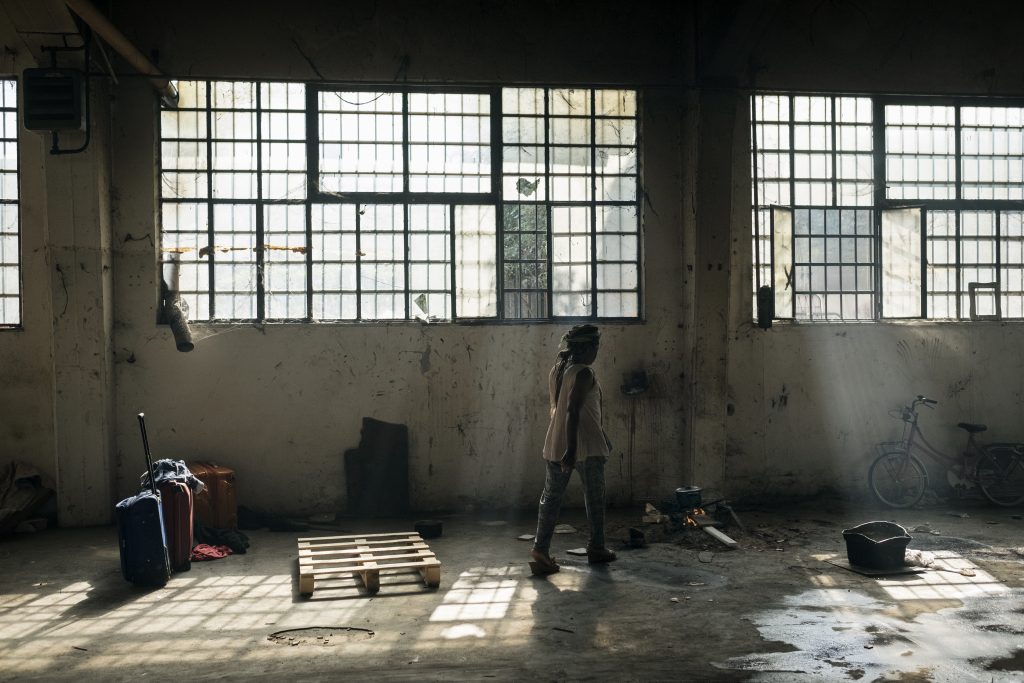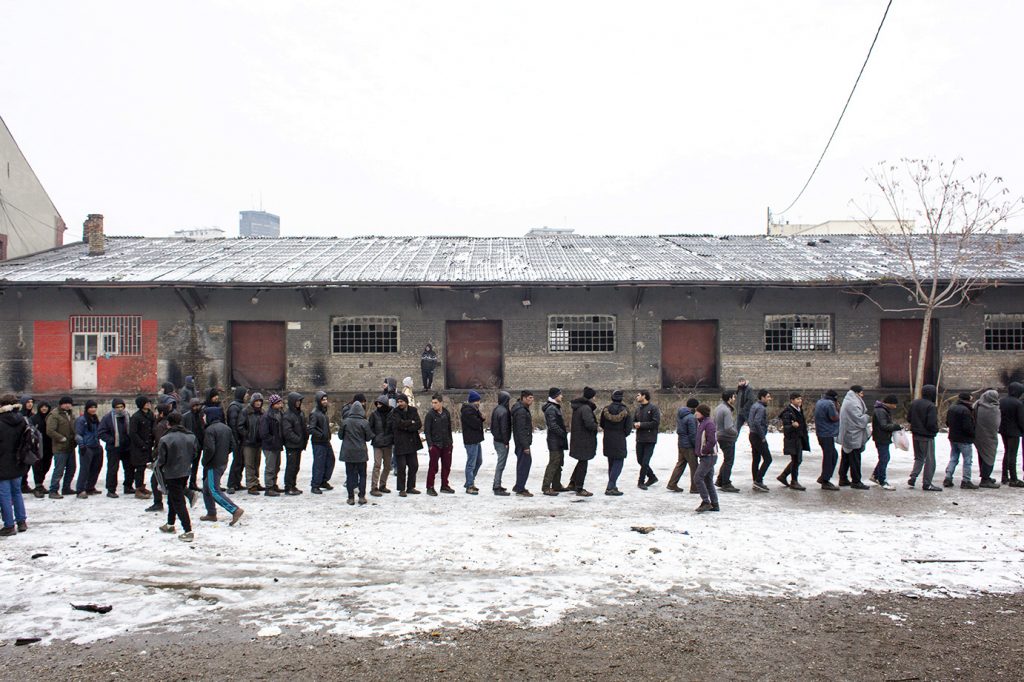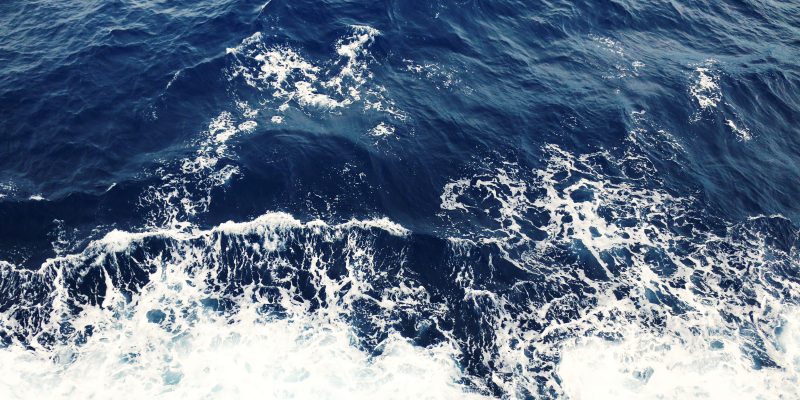1. Death on the high seas: Libya is playing Battleship against the NGOs, endangering migrants’ lives
A rescue operation carried out 30 km from the Libyan coast (that is, in international waters) by German NGO Sea Watch and coordinated by the Italian Coast Guard central command was violently sabotaged by the Libyan Coast Guard, who tried to take the migrants back to Libya, ignored instructions from the Italian Coast guard and endangered the lives of many.
This tragic incident cost at least 50 migrants their lives, and has exposed the consequences of Italy and the EU’s dangerous game in Libya and the barbaric behaviour of those Libyan Coast Guard who were trained and equipped by Italy. Read the report by Sea Watch (complete with a video) and Daniele Biella’s interview with volunteer Gennaro Giudetti, who asked for a chance to tell Minister Minniti about the horrors he witnessed at sea.
2. Death on the high seas /2: the massacre of women
A Spanish vessel arrived in Salerno with over 300 rescued migrants on board, but also carrying the bodies of 26 young women who died out at sea. “A tragedy for mankind,” said the city’s prefect Salvatore Malfi, who might open a murder investigation. Read the article by Gaia Pianigiani and Christine Hauser in the New York Times, Roberto Saviano’s J’accuse in Repubblica and the commentary in Famiglia Cristiana to the online hatred that even tragedy cannot seem to stop.
3. Border deaths: 33,293 names to remember
Thousands have lost their lives during the desperate crossing of the Mediterranean or any of the dangerous routes to Europe. The German newspaper Der Tagesspiegel has published on its front page a list of 33,293 names – those who died on the borders over the last 25 years (since May 1993). Read the article in Mashable on the reactions to “Die Liste”. Also read our own 3-part report on border deaths.
A German newspaper has published the names of 33,000 people who have died trying to reach Europe. pic.twitter.com/Y1JFfGBVV2
— Catrin Nye (@CatrinNye) November 9, 2017
4. Fleeing Tunisia
4,500 have arrived in Italy from Tunisia in 2017, 3,000 of them in September and October alone. What is really behind this sharp increase in departures from Tunisian coasts? This article by Stefano M. Torelli in ECFR explains why Tunisia is still a country of origin (and not of transit) for migrant flows.
5. No home for refugees in Rome
Rome is the only European capital without a plan for migrants and refugees. As a consequence, hundreds of people are left to fend for themselves in precarious conditions, with volunteers as their only help, and squatting as the only available form of housing. We had already told you (and will keep continue to tell you) about this situation, before and after the violent evacuation of Piazza Indipendenza last summer, through Eleonora Camilli’s reports, and now in the second part of Eric Reidy’s report in Irin News.

The eviction of via Vannina occupied building (photo: Francesco Pistilli for Open Migration)
6. Italy’s lottery of asylum
Italy’s approach to migrants and refugees is one of “permanent emergency”, and is far too weak and irrational, with asylum seekers facing something like a lottery. Oxfam Italy has just published a report titled Italy’s lottery of asylum, highlighting the arbitrary mechanisms of our asylum system. Read the article by Ottavia Spaggiari in Vita.
7. Winter is coming, and Europe is still unprepared for it
Three years from the beginning of the so-called “refugee crisis”, and with millions invested, reception camps in Europe are still not equipped for the winter and its cold. Read about the situation in Greece in Are You Syrious’s daily digest and the one in Serbia in Balkan Insight.

Refugees in Serbia (photo: Alberta Aureli for Open Migration).
8. Criminalising solidarity in Europe
Crimes of solidarity are on the rise in Europe, part of a specific EU strategy to discourage civil solidarity, as Nando Sigona pointed out. Also in line with this alarming trend is the smear campaign against the NGO saving lives out at sea that was started last summer by the Gefira Foundation and the so-called Generation Identity). A new report by the Institute of Race Relations attempts to clarify the situation. Read Mark Townsend’s article in the Guardian.
9. We need to keep talking about Rohingya
“A textbook case of ethnic cleansing”, in the words of the UN, yet the tragedy of the Rohingya, caught between Myanmar and Bangladesh, is still underreported. Here is a selection of essential reads to understand the gravity of the situation and what is behind the inertia of the international community:
- How we got here: CNN’s timeline of the Rohingya crisis;
- The Rohingya exodus from Myanmar and a future denied in Bangladesh – a report by Al Jazeera 101 East;
- The world’s promise “never again” does not seem to apply to the Rohingya. Max Fisher’s article in the New York Times;
- Why is the Rohingya crisis not being classed as genocide? Sam Kiley’s explainer in Sky News.
10. Borders and climate change
Wars and persecution are not the only things forcing people to leave their homes, as Saskia Sassen explained not too long ago. Climate change and the attending loss of habitat are already causing displacement and migrant flows, and will cause even more in the future, yet we are totally unprepared to provide adequate responses to this phenomenon.
Expert Reece Jones writing for Undark sheds some light on this complex issue, while this article in Fast Company explains how New Zealand is rethinking its asylum system to extend protection to those fleeing environmental disasters. Also read Rebecca Buxton and Theophilus Kwek’s op-ed on why we need to listen to the voices of environmental refugees right now.
Foto di copertina: Pexels (CC0).









